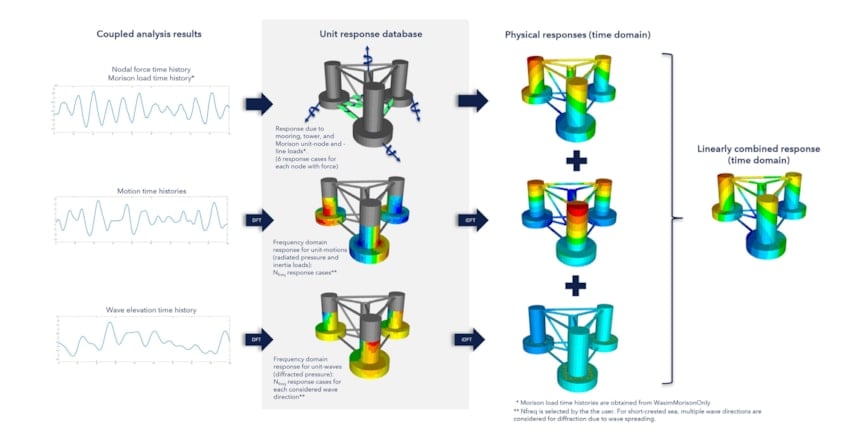DNV launches advanced time-saving tools for analysis of floating offshore wind structures
DNV, the independent energy expert and assurance provider, has developed three advanced time-domain methods for analysing the structural performance of floating offshore wind turbines. Now available in DNV’s Sesam software, the methods simulate how turbines respond to wind and wave forces in harsh offshore environments.
Analysing floating wind turbines is highly complex, as combined wind and wave loads must be captured using large, detailed structural models. Time-domain analysis, used to model a structure’s behaviour over time under changing conditions, is typically required, but demands substantial computing time, even on high-performance systems. By calculating how the structures move and react at every time step, engineers can more accurately predict performance, detect potential issues, and design safer, more reliable systems.
The enhanced time-domain methods in Sesam significantly reduce the computational time needed to simulate these dynamic responses, while improving the accuracy and efficiency of strength assessments such as fatigue damage and ultimate limit state analyses.
"According to our latest Energy Transition Outlook, floating wind capacity is projected to reach 331 GW by 2060, and the sector faces significant new challenges," said Kenneth Vareide, CEO of DNV Digital Solutions. "It is essential that the industry takes every possible measure to minimise risk and secure project success. These new methods represent a fundamental advance in the analysis of floating wind structures, delivering faster performance, greater efficiency, and adherence to the latest standards."
The new methodologies are fully integrated into DNV’s Sesam software suite, which supports design, optimisation, and structural assessment throughout the lifecycle of offshore assets:
- Direct Load Generation computes the hydrodynamic pressure field on the structure and performs a dynamic or quasistatic time-domain analysis.
- Load Reconstruction uses pre-calculated pressure transfer functions to reconstruct the hydrodynamic pressure on the hull, followed by time-domain structural analysis.
- Response Reconstruction goes a step further by deriving the structural response directly from response transfer functions, removing the need for explicit load calculations or traditional finite-element analysis.

"Floating offshore wind turbine analysis is demanding because it tracks detailed hydrodynamic and structural responses throughout the simulation, making large projects extremely time-consuming. Customers can now choose the most efficient analysis method based on the specific needs of their project, reducing simulation time and costs, supporting faster design cycles with confidence that the results are accurate and in compliance with the relevant regulations," said Sille Grjotheim, Global Segment Director for Floating Offshore Wind at DNV.
Since its origin in the 1960s, DNV’s Sesam software has been trusted for the design and analysis of ships and offshore structures. This latest development continues that legacy by helping ensure tomorrow’s floating wind turbines are ready for the demanding environments in which they will operate.
Access DNV’s newly published whitepaper to explore advanced time-domain methods for floating wind analysis, supporting the safe and efficient design of tomorrow’s FOWTs.

